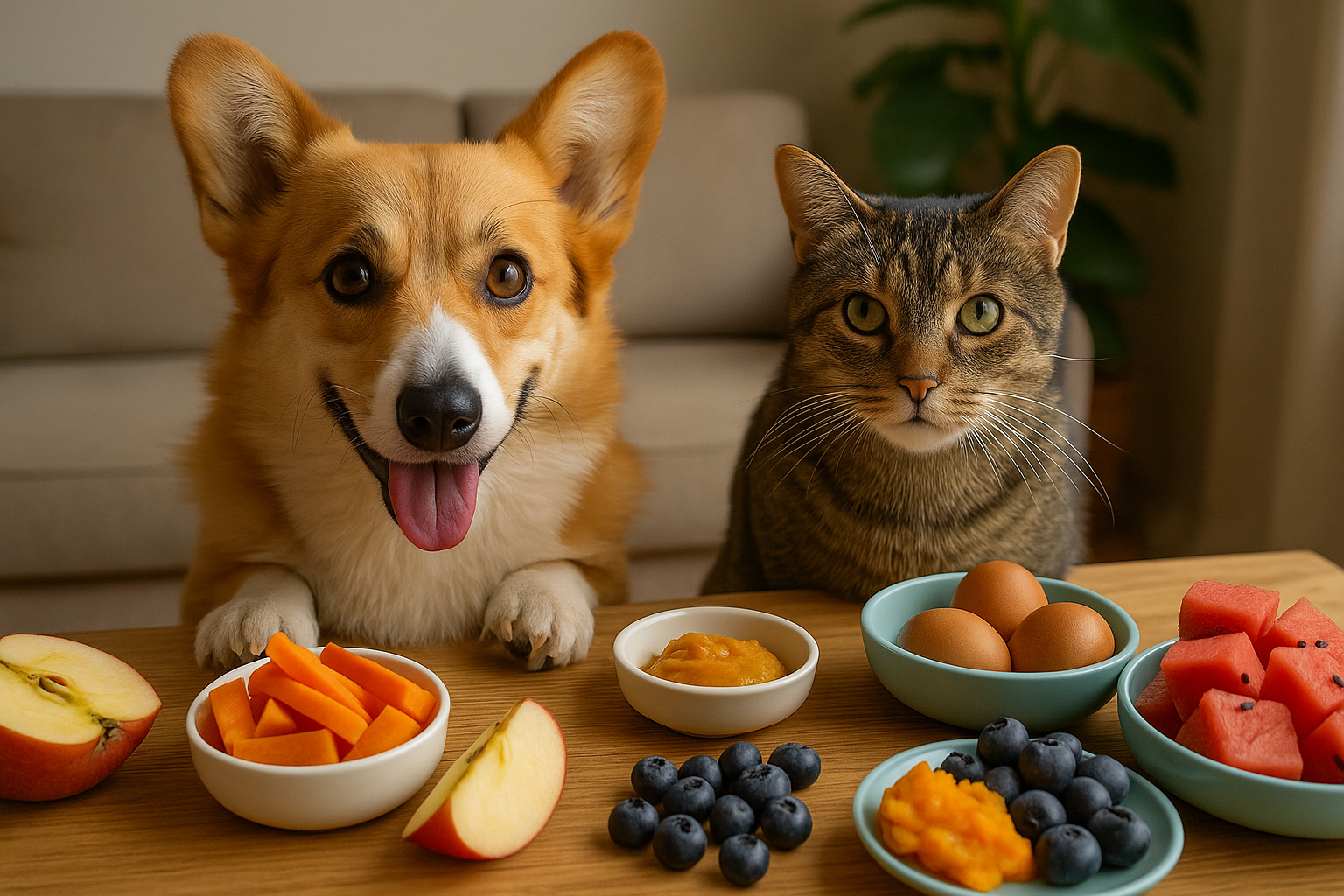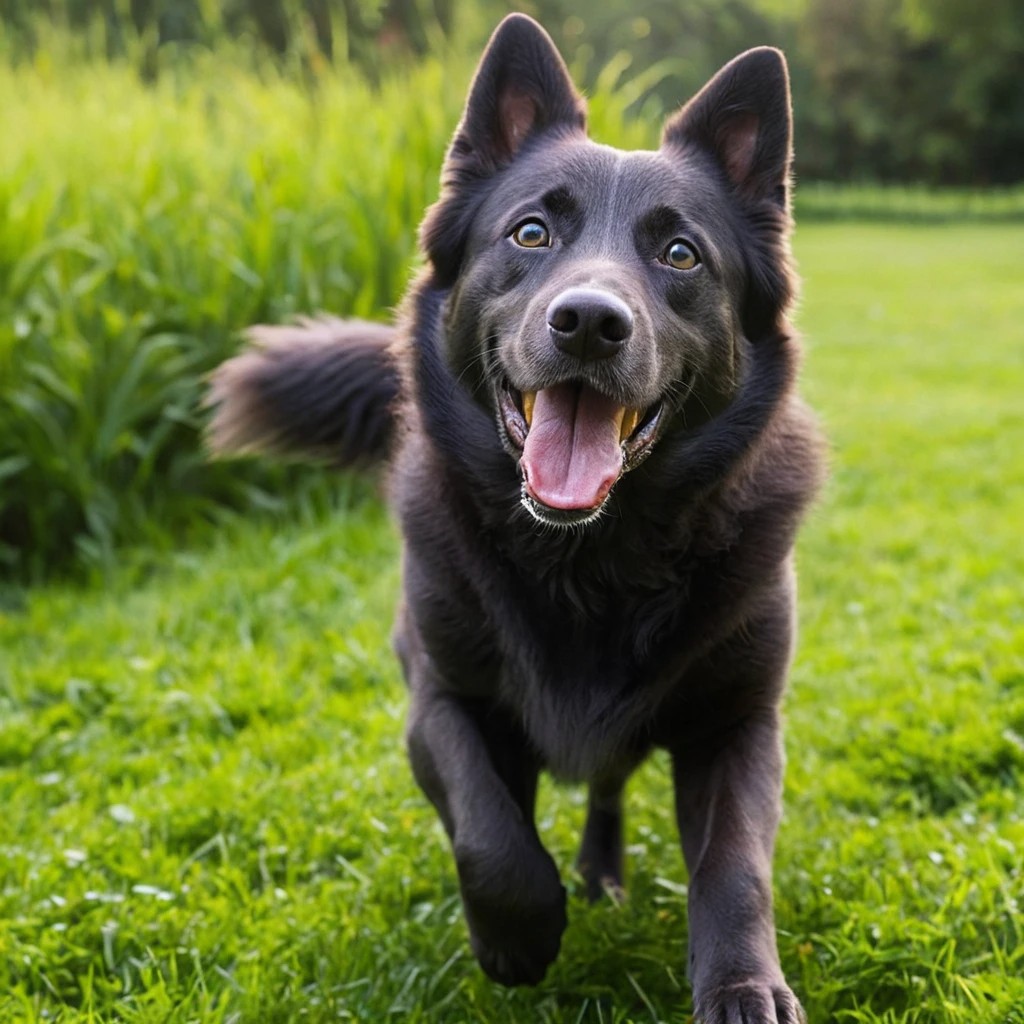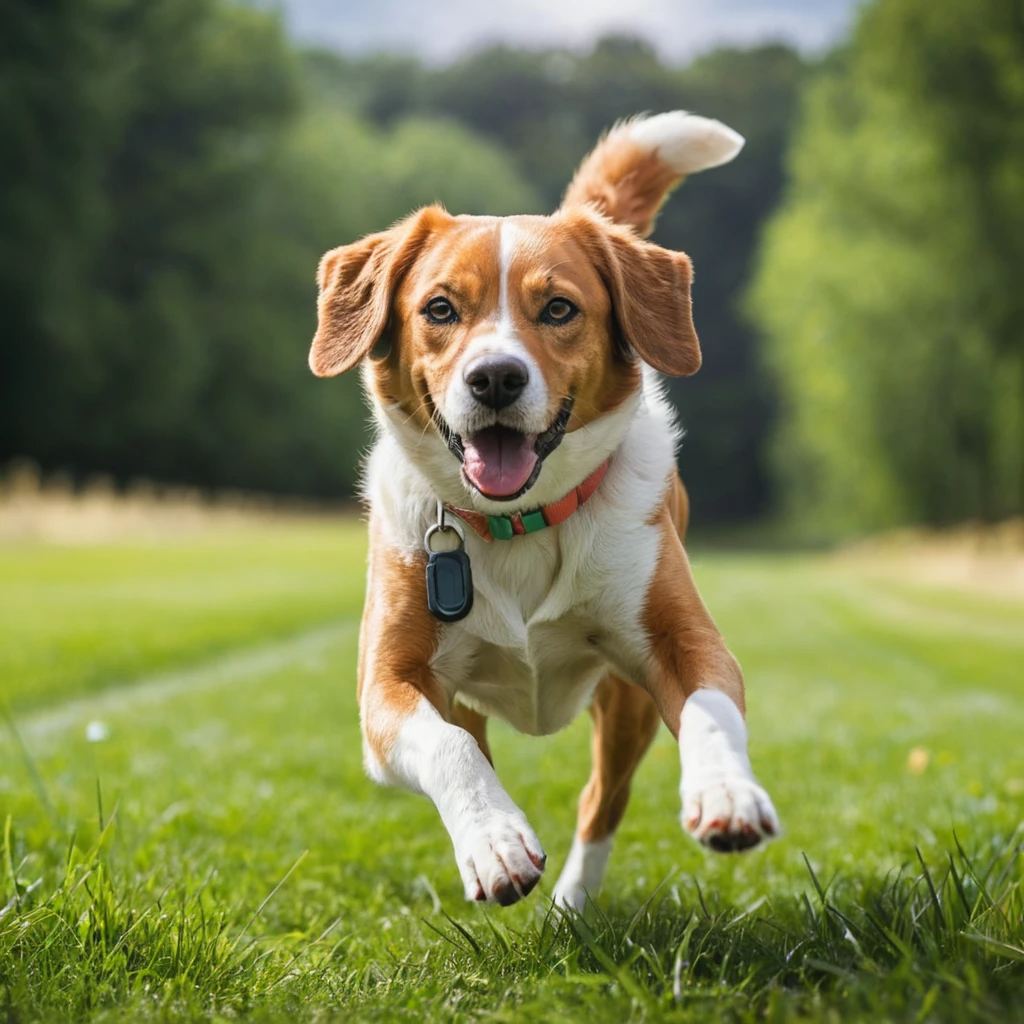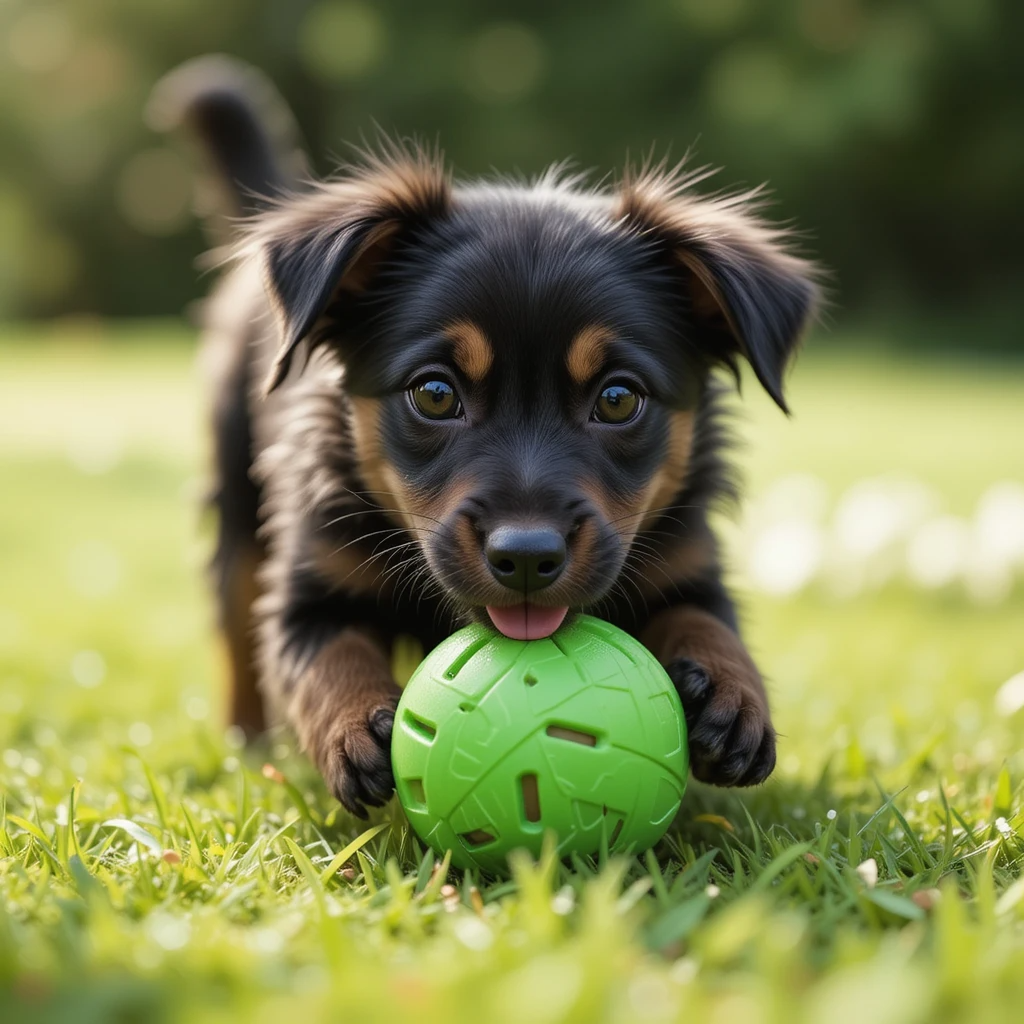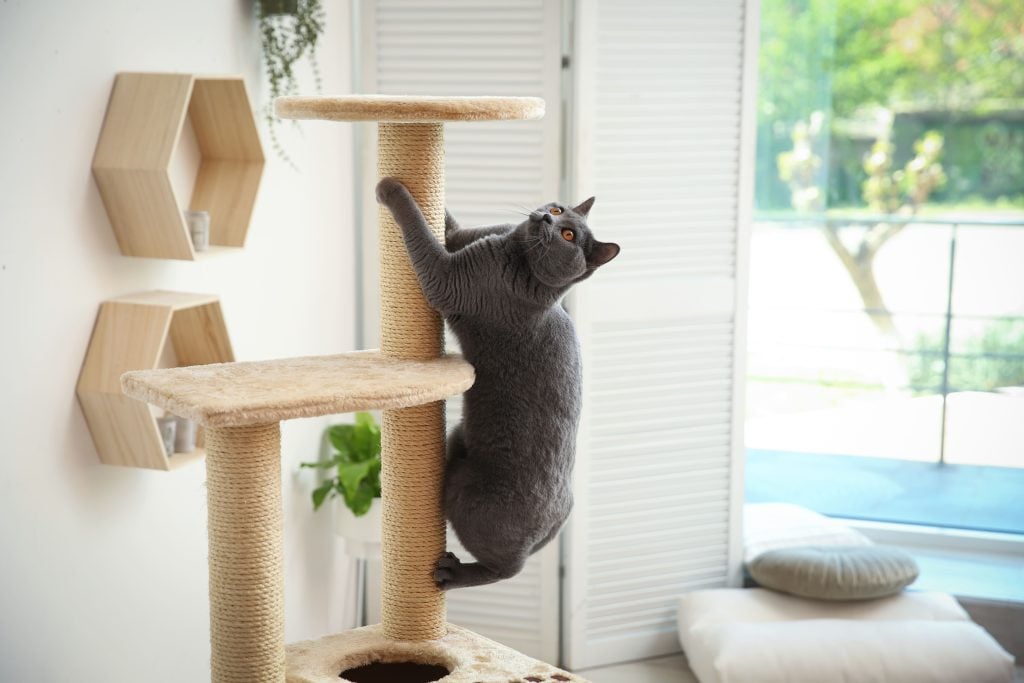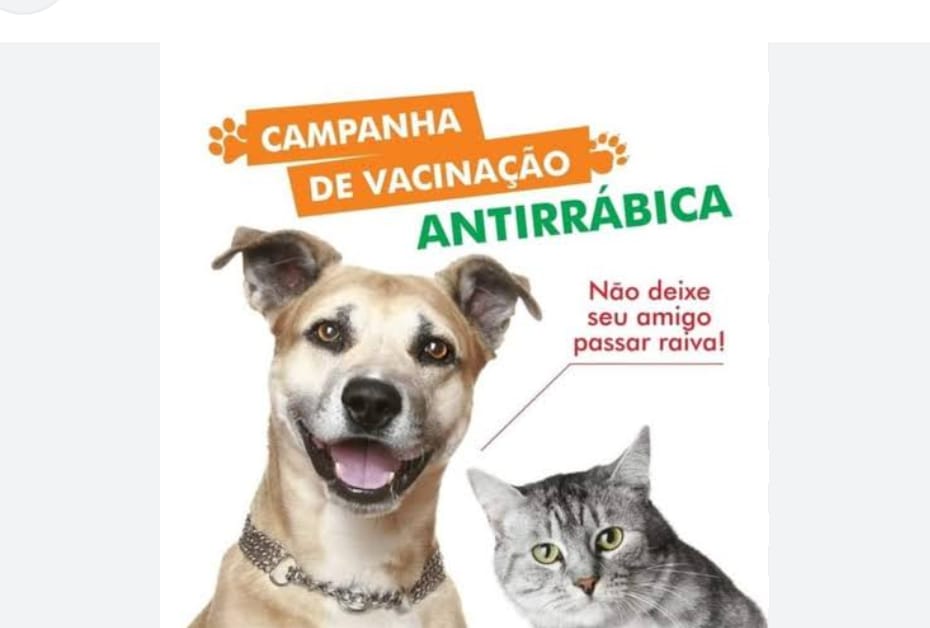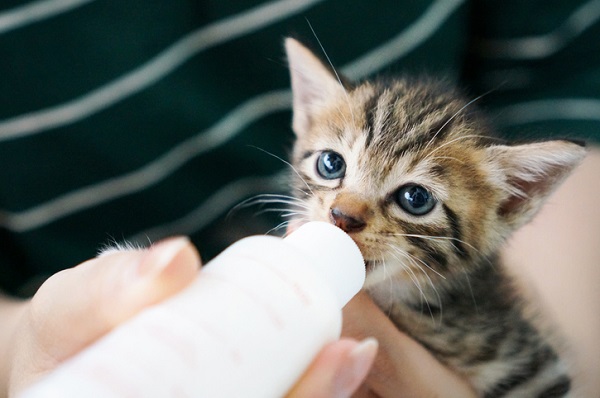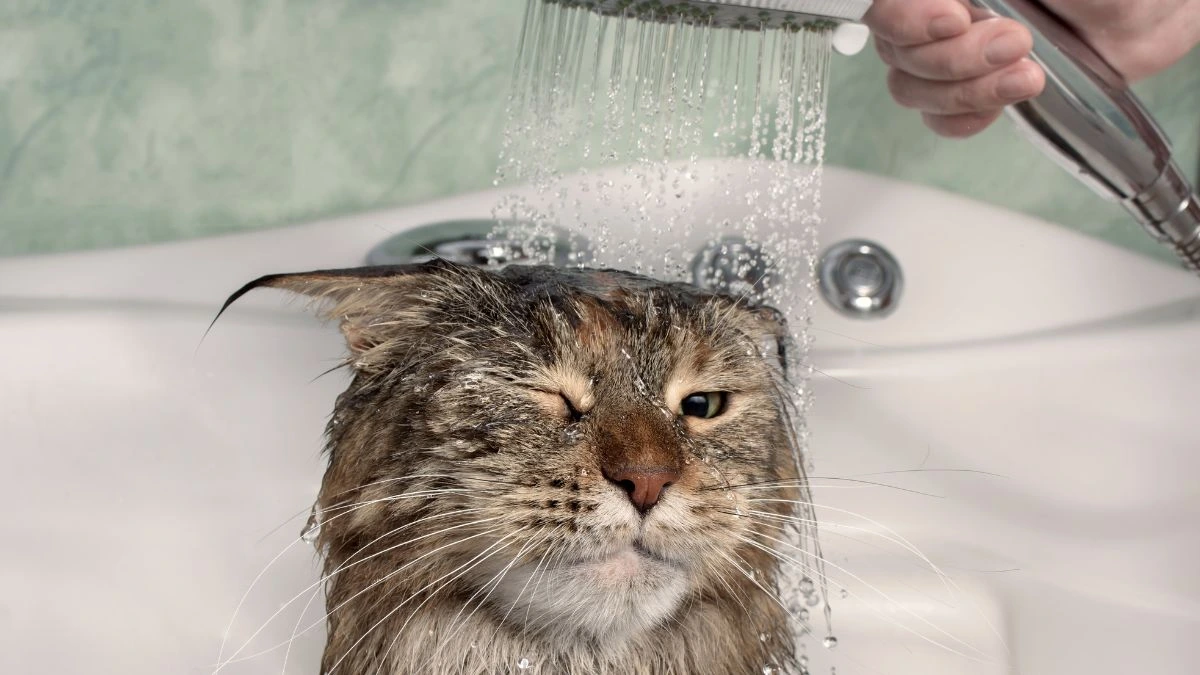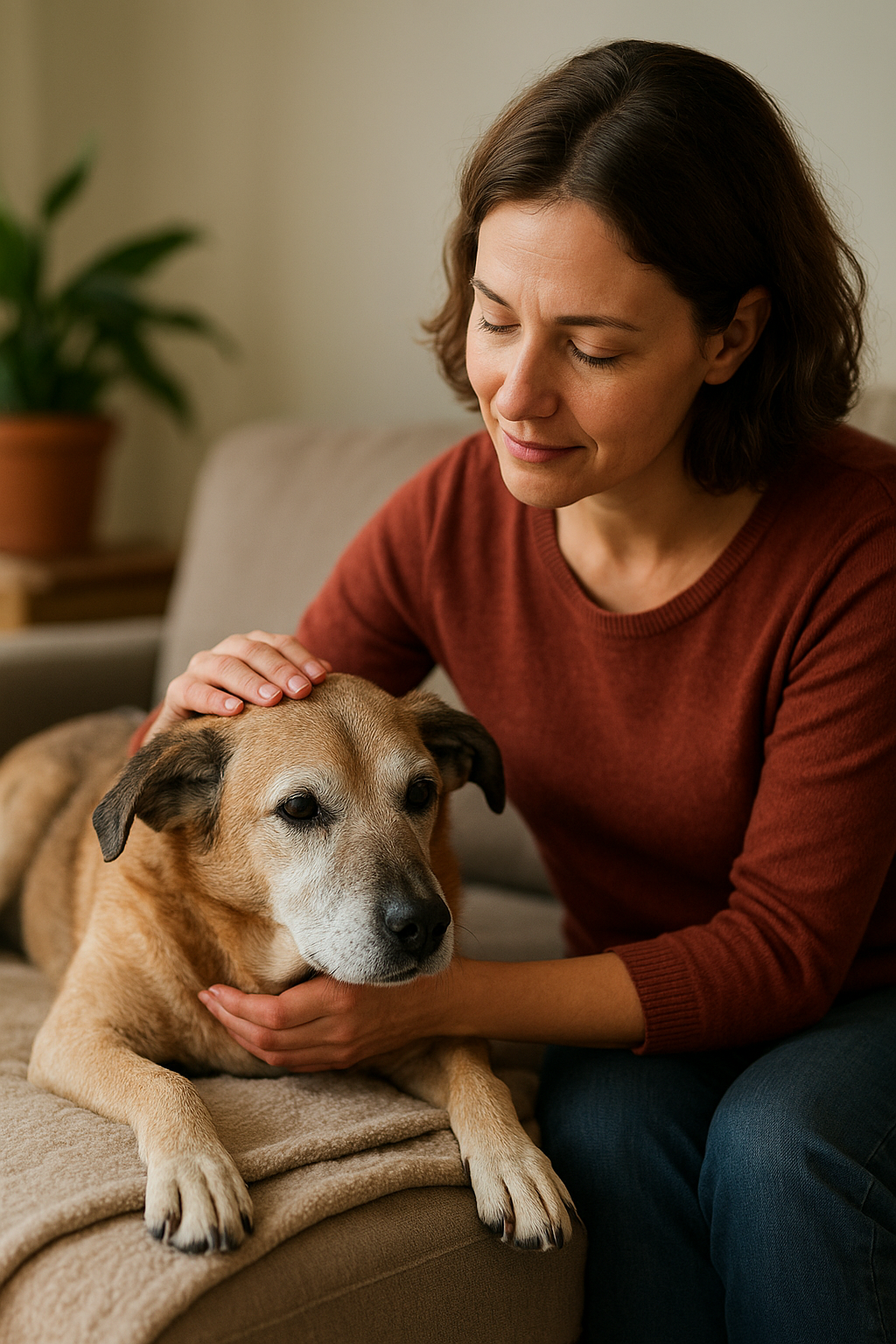Como tutor de um pet, é normal querer compartilhar um pedaço do seu petisco com seu cão ou gato — especialmente quando eles lhe lançam olhares suplicantes. Mas muitos alimentos humanos são prejudiciais ou inadequados para animais de estimação. A boa notícia? Existem alimentos seguros e simples que você pode compartilhar com seus pets com moderação, que podem até oferecer benefícios à saúde quando administrados da maneira correta.
Este artigo mostrará quais alimentos do dia a dia são adequados para animais de estimação, como servi-los e o que evitar — tudo com foco em manter uma alimentação casual e prática para a vida diária.
Primeira regra: trate a comida humana como um bônus ocasional
Cães e gatos devem obter a maior parte de sua nutrição de rações comerciais de alta qualidade ou refeições caseiras aprovadas, preparadas com um veterinário. Qualquer alimento humano que você oferecer deve ser:
- Ocasional – não mais do que 10% da ingestão diária
- Simples e direto – evite sal, especiarias, açúcar e molhos
- Servido em pequenas porções – apenas o suficiente para um deleite
Agora, vamos dar uma olhada em opções seguras que você provavelmente já tem em casa.
Alimentos seguros para compartilhar com cães
Os cães geralmente são mais tolerantes a uma gama maior de alimentos humanos do que os gatos.
1. Carnes magras cozidas (sem sal ou tempero)
- Frango, peru, carne bovina ou suína (sem ossos ou pele)
- Retire a gordura e cozinhe bem
Dica de consumo: Corte em pedaços pequenos e ofereça durante o treino ou como acompanhamento de uma refeição.
2. Arroz ou macarrão simples
- Especialmente útil se o seu cão tiver dor de estômago
- Ofereça cozido e resfriado, sem molho ou manteiga
3. Cenouras e Vagens
- Guloseimas crocantes e de baixa caloria
- Pode ser cru ou cozido no vapor
4. Fatias de maçã (sem sementes)
- Um lanche doce e crocante que os cães adoram
- Ótimo para refrescar o hálito
5. Manteiga de amendoim (sem açúcar e sem xilitol)
- Coloque em brinquedos ou congele em moldes
- Um deleite rico — use com moderação
6. Abóbora ou batata-doce (simples, cozida)
- Auxilia na digestão e adiciona fibras
- Ótimo para misturar nas refeições
7. Ovos (mexidos ou cozidos, sem óleo)
- Cheio de proteína
- Sirva somente totalmente cozido
8. Mirtilos, bananas ou melancia
- Cheio de antioxidantes e hidratação
- Sirva em pequenas quantidades
Alimentos que devem ser evitados: Chocolate, uvas, passas, cebolas, alho, abacate e qualquer coisa com xilitol ou cafeína.
Alimentos seguros para compartilhar com gatos
Os gatos são carnívoros por natureza — dependem muito de proteínas e não conseguem digerir muitos alimentos vegetais. Mas ainda assim podem desfrutar de pequenas porções de certos alimentos.
1. Frango ou peru cozido (simples)
- O favorito dos gatos!
- Sirva sempre sem osso e sem pele
2. Ovos cozidos (simples)
- Mexidos ou cozidos são os melhores
- Ofereça uma colherada pequena, sem temperos
3. Abóbora enlatada (simples, sem açúcar)
- Bom para a saúde digestiva
- Misture uma colher pequena com comida normal
4. Vagem ou ervilha cozida no vapor
- Opções vegetarianas de baixa caloria
- Alguns gatos gostam deles como uma novidade
5. Atum ou salmão (ocasionalmente)
- Os gatos adoram peixe, mas é melhor comê-lo como um petisco
- Evite atum embalado em óleo ou variedades temperadas
6. Melão ou melancia (sem sementes)
- Alguns gatos surpreendentemente adoram frutas
- Sirva apenas pedaços pequenos
Importante: Gatos são exigentes com a comida e podem não tolerar bem mudanças. Introduza novos alimentos lentamente.
Alimentos que os gatos devem evitar: cebola, alho, laticínios, chocolate, cafeína, álcool e massa crua.
Dicas para introduzir alimentos humanos com segurança
- Teste um novo item de cada vez e observe as reações
- Sirva apenas pequenas porções
- Nunca force um alimento se seu animal de estimação o recusar
- Fique atento a alergias como coceira, dor de estômago ou vômitos
Se você notar qualquer mudança no comportamento ou na digestão após oferecer um novo alimento, pare imediatamente e consulte seu veterinário.
Maneiras divertidas de compartilhar lanches sem criar maus hábitos
Você não quer que seus bichinhos fiquem implorando à mesa ou esperando um pedaço de tudo o que você come. Veja como compartilhar com responsabilidade:
- Tenha um “momento de prazer” após as refeições , não durante as suas
- Use brinquedos de quebra-cabeça ou tapetes de lamber para oferecer comida ao humano
- Misture na tigela como um reforço de refeição , não como um brinde
A consistência ajuda seu animal de estimação a entender que compartilhar comida é uma recompensa especial, não uma demanda diária.
Ideias de guloseimas caseiras com ingredientes seguros
Quer ser criativo? Experimente estas ideias DIY:
Para cães:
- Bolinhos de banana congelados com um toque de manteiga de amendoim
- Muffins de frango e arroz (cozidos e prensados em formas)
- Palitos de cenoura mergulhados em purê de abóbora
Para gatos:
- Mini hambúrgueres de atum e ovo (assados)
- Flocos de salmão misturados com arroz cozido
- Cubos de abóbora congelados para lamber
Faça pequenas porções, congele o que sobrar e mantenha as porções pequenas.
Quando evitar compartilhar comida humana
Mesmo alimentos seguros devem ser evitados se:
- Seu animal de estimação está em uma dieta especial ou tem alergias
- Seu veterinário desaconselhou alimentos humanos
- Seu animal de estimação implora excessivamente ou ganha peso
Priorize sempre as necessidades específicas do seu pet. O que é seguro para um animal pode não ser para outro.
Considerações finais: compartilhar comida pode ser seguro e divertido
Com um pouco de cuidado, você pode compartilhar com segurança pedaços da sua comida do dia a dia com seus pets e criar momentos felizes de conexão. Lembre-se da regra de ouro: simples, simples e com moderação.
Feito corretamente, é uma ótima maneira de enriquecer suas vidas, sem colocar sua saúde em risco.

